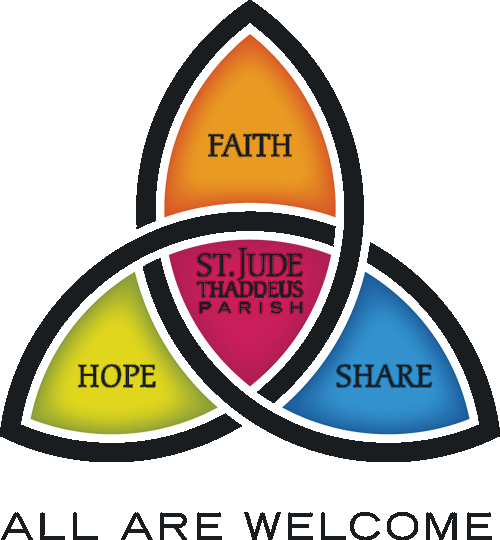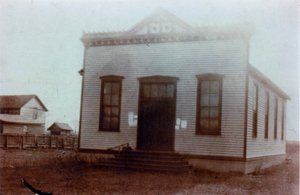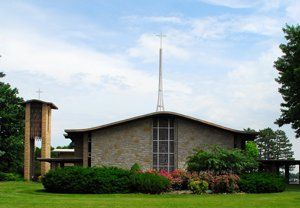The history of Saint Norbert Church begins at the turn of the twentieth century. Around that time several Catholic families had settled in the Munger area and felt a need for the church in their midst, so the Norbertine Fathers from St. John the Evangelist Parish in Essexville, came into the area to attend to the spiritual needs of the Dutch and Belgian immigrants who were on the outskirts of St. John’s Parish. Other families attended St. James Church in Bay City, Sacred Heart in Saginaw from the Indiantown section, and St. Elizabeth Parish in Reese from the southern section of the parish. The greater proportion in these early days, Hollanders and Belgians hailed from Essexville. There was some of French nationality who came to Munger from near Gilford. A sizable group of Irish near the Saginaw County boundary were members of the parish along with a scattering of Poles and Slavs whose numbers increased as the parish grew. The German element of the Munger community was originally of the Lutheran faith with a few exceptions. According to records from the Norbertine Abbey at West DePere, Wisconsin, Father Bresson the pastor of St. John’s organized a mission at Munger in 1902.
St Norbert
On June 19, 1904 Father Martin deLang, O. Praem was appointed pastor of the new mission. However since there was no residence, indeed no church building, both Father deLang and his successor, Father John B. Crielaers, worked out of Essexville and resided with the Charles Beaushaw family on Munger Road, while they were in Munger. Holy Mass was offered in the Merritt Town Hall on Sundays and Holydays until the church was built. The cornerstone of this first Saint Norbert Church was laid in 1906 and the church dedicated on July 17, 1907. The name for the new church, St. Norbert, was selected from a list of names that was submitted to Bishop Henry Joseph of Grand Rapids from Rev. R. Van Rooy of St. John’s Church in Essexville.
In August of 1908 Father John B. Crielaers came to replace Father deLang and stayed until March 27, 1910 when the mission was given up by the Norbertine Fathers and reverted to the Diocese of Grand Rapids.
In April of 1910 Bishop Henry J. Richter, Bishop of Grand Rapids, established St. Norbert’s Church in Munger as a Parish and sent Father James Golden as the first resident pastor. The first rectory was built during Fr. Golden’s tenure in 1910.
Under the direction of Fr. Baumann a school was built in 1924. The school was open from 1924-1931 and 1939-1971. The Dominican Sisters of Grand Rapids were teachers.
The Depression was in full swing and the United States entered WWII during the time Father Niedzwiecki was pastor. However, despite these trying times, before Father Niedzwiecki left our parish, he managed to pay off the entire debt of St. Norbert’s, which had plagued it since the days of the school’s construction.
In September of 1949 the school well had run its course and was nearly dry. That left St. Norbert’s with no deep well on the parish property. In all, 11 wells were dug in 1949 trying to find a water supply for the parish buildings, to no avail. Finally, Fr. Hafner solved the problem in 1951 by having a huge reservoir dug behind the church about three hundred feet long and about thirty feet wide and some fifteen feet deep. This was built with technical assistance from Michigan State Extension Services. Water from adjoining fields as well as the rain water from the school and church roofs was tiled into the pond, and pumped into all four parish buildings. This arrangement is one of the most unique in this part of the country for a rural parish. It has attracted wide attention from persons all over the state of Michigan. With the completion of “Hafner Lake” the pastor was able to raise the level of the parish grounds and landscape extensively thereby adding much beauty to the parish site.
St. Norbert’s had been raising monies since 1948 to build a new Convent for the Sisters who taught at the school, but Bishop Stephen Woznicki visited the parish on April 20, 1952 and decided that it would save a great deal of money if the parish built a new rectory instead and turn the old one into the Convent. The new rectory was completed in 1954. When the Sisters returned in the fall of 1954 to teach at the school, they took up residence in the old rectory which was renovated for a Convent.
During the summer months many Spanish speaking Texans came to this region to work in the sugar beets and potato fields, the two crops for which Munger is famous for. Beginning in 1948, Catechism has been taught to the children of these migrants by personnel of the Mexican Apostolate, usually seminarians. In Father Miller’s time (about 1952) a full day school was organized at St. Norbert School. The seminarians and lay teachers taught reading, English, spelling and arithmetic, as well as Catechism to many of these children, reaching a peak enrollment of 180 in the summer of 1961. Eventually it was hoped that some religious community of Sisters could provide even better and more professional teachers for these children whose parents travel for work about six months out of each year. This program continued through the 1960’s.
In the fall of 1960 at the direction of the Bishop, Father Hart engaged Architects to draw a preliminary sketch of a proposed new church that was needed because of structural problems facing the old church that was built in 1906. The walls were bulging outward and three cables had been installed inside to hold the walls together in 1952. These cables were visible for all to see as they were strung high across the church, from wall to wall. Also the congregation had outgrown the old church.
In 1996 Fr. James R. Carlson became the shared pastor for both St. Norbert Parish and Reese’s St. Elizabeth Parish as a pilot program (Companions on the Journey) started by Bishop Kenneth Untener due to a shortage of priests and waning attendance to services in the Saginaw Diocese. Also at this time, Sr. Tereska Wozniak, O.P. came to St. Norbert and St. Elizabeth’s to help Fr. Carlson oversee the everyday workings of both parishes as Pastoral Associate.
In 2006, members of St. Norbert Parish kicked off their second century on Sunday, June 4, with an inspiring message from Saginaw Bishop Robert Carlson, who said, “We’re the pioneers – it’s up to us to guide the church into the future.” Bishop Carlson celebrated the 100th anniversary Mass, along with Pastor Fr. Bill Gruden.
In 2013 a decision by Bishop Cistone was announced that St. Norbert Parish would merge with St. Joseph of Bay City and St. John the Evangelist of Essexville to form a new parish at the St. John site in Essexville. St. Norbert and St. Joseph Churches will be designated for occasional use.
To say we as a parish were sad about the Bishop’s decision, would be an under-statement. Change is always hard. We love our church, as does every parish. It is very hard to give up what we have, but we have come full circle; the Norbertine Fathers of St. John’s started our parish as a mission in 1902 and we will join with them and St. Joseph’s on July 1, 2014 to start a new parish together, St. Jude Thaddeus. They say when God closes a door He opens a window. In this case it’s a stained glass window He is opening and we just have to have the faith and willingness to climb through it together.


